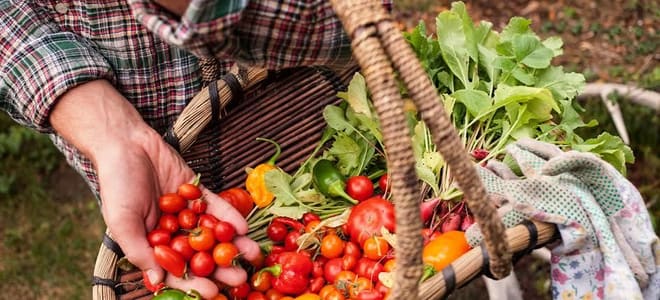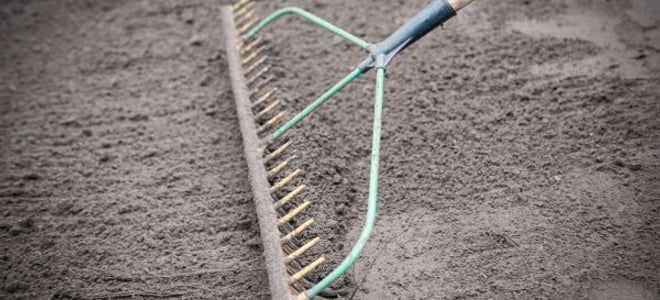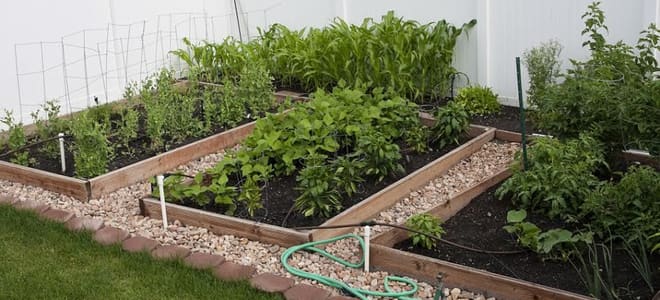By: Sandra Karnes

A vegetable garden can be very rewarding. As with any new beginning, you will want to start simple and learn the tricks and tips of gardening as you go.
Sun, Size, and Soil
Vegetables need a minimum of six hours of sun per day. Keep in mind that the sun gets higher as the months pass, so the hours of sun light on your plot will increase as summer nears and passes. In this case, more is better.
A good size starter garden should be no bigger than 10x10 feet. It's manageable and will supply just enough vegetables so that there is no waste.
Soil is an extremely important factor that coincides with success. Seeds and young plants need soft, loamy soil so that their tender roots can push through. Test your soil for nutrients that it may be lacking.
Once you've chosen where your plot will be, remove all the grass, weeds, and stones. Dig up the plot with a rototiller or a pitch fork and shovel. Tip: You can usually rent a tiller just to get your first dig done.
Dig down at least 12 inches. Add any nutrients that your soil test revealed was lacking. Tip: Compost or aged manure are great, natural fertilizers. Mix well into the soil.
Once you've added your nutrients, till (or turn) the soil again. Let the area rest for a couple days.
Consider a raised bed. Raised bed gardening can add a little landscape look to your yard and is perfect for a beginner. Frame out a square or rectangle of wood and set it in your desired area. Layer newspaper in the bottom of your raised bed. The newspaper will kill the grass and keep any weeds from coming through to the surface. Fill the bed with garden soil and a little manure or compost. Let the soil rest for a couple days. Tip: don’t use railroad ties or treated lumber, since the chemicals could leach out of the lumber and contaminate your vegetables. The best raised bed material is composite decking since it won’t rot or disintegrate.
Choosing Seeds and Plants
Because you're a beginner, you will want to find plants and seeds that are easy to grow. If you pick seeds that are hard to grow, you may get discouraged by the results.
Radishes and green onions are two of the easiest and fastest growing plants. From seed to table for radishes is only about 20 days. (Also, the seeds are easy to handle because they're bigger than most.) Tip: If you want radishes to grow even faster, spread the seeds on a paper towel laid in a flat dish, with another paper towel over the seeds. Soak the paper towels with water from a spray bottle. The seeds will sprout in a day or two, and then you can plant them in soil.
For green onions, don’t buy seeds—buy onion sets. All you have to do with onion sets is push them into the ground with the root end down and leave a little of the other end sticking up through the soil. Tip: If you have any robins in your area, you may want to cover the onion sets with a cage of chicken wire. For some reason, robins think they are worms and pull them out of the ground. Once the onion tops turn green, you can remove the cage.
Another beginner favorite is tomatoes. Tomatoes can be easy to grow, depending on the variety you choose. For a first-time gardener, I would recommend a small tomato. The smaller tomatoes are less likely to succumb to end rot or other tomato diseases. Cherry or plum tomatoes are easy to grow, mature fast, and taste great. However, don’t try growing them from seed, at least not your first year. Go easy on yourself and purchase plants that have already been started. Your chances of getting all the way to harvest are better if you purchase bush varieties of tomatoes. They don’t require tomato cages and grow within a given area. Tip: buy some sweet basil to plant near the tomatoes. Basil repels bugs and will add flavor to your tomatoes.
For green onions, don’t buy seeds—buy onion sets. All you have to do with onion sets is push them into the ground with the root end down and leave a little of the other end sticking up through the soil. Tip: If you have any robins in your area, you may want to cover the onion sets with a cage of chicken wire. For some reason, robins think they are worms and pull them out of the ground. Once the onion tops turn green, you can remove the cage.
Another beginner favorite is tomatoes. Tomatoes can be easy to grow, depending on the variety you choose. For a first-time gardener, I would recommend a small tomato. The smaller tomatoes are less likely to succumb to end rot or other tomato diseases. Cherry or plum tomatoes are easy to grow, mature fast, and taste great. However, don’t try growing them from seed, at least not your first year. Go easy on yourself and purchase plants that have already been started. Your chances of getting all the way to harvest are better if you purchase bush varieties of tomatoes. They don’t require tomato cages and grow within a given area. Tip: buy some sweet basil to plant near the tomatoes. Basil repels bugs and will add flavor to your tomatoes.
Cucumbers and beans are another favorite for first-time gardeners. Again, bush varieties are easiest to grow. Tip: you can use the same paper towel trick as you did for the radishes (see above) to get your cucumber or bean seeds to sprout sooner.
How to Plant
A basic rule of thumb is to follow the seed package directions for spacing. Keep in mind that your 10x10 area doesn’t leave much room to grow a lot of vegetables if you plan on using a tiller between rows. For more vegetables, distribute most plants about 18 inches apart. Leave just enough room for you to walk through the rows.
If you have a little creativity in your bones, you don’t have to stick to row planting. You could plant one plant in one corner, another plant in another corner, and so on. Tip: Plant tall vegetables (tomatoes, bush beans, etc.) on the north side of the garden. This keeps the tall varities from shading the smaller plants.
Care of Your Garden
Your new plants will need a minimum of one inch of water per week. If Mother Nature isn’t cooperating, you must water with a hose. I say hose, because it is best to water just the ground and not the leaves of your plants. Soak the ground well and let the roots soak up what they need, and then let them dry a few days before returning with the hose again. Too much water can do as much damage as too little water.
Hoe often. The reason is two-fold. It will keep the ground around the plants soft and help control weeds. Don’t let weeds take hold—they steal water and energy from your plants.
Keep a record of where you plant each vegetable because next year (if you are plant the same type of vegetable) you will want to plant it in a different area. Each plant pulls different nutrients from the ground and you will want the ground to recover for a year or two before you plant the same type again in that spot.


No comments:
Post a Comment
Per favore lasciate il vostro commento o domanda qui: